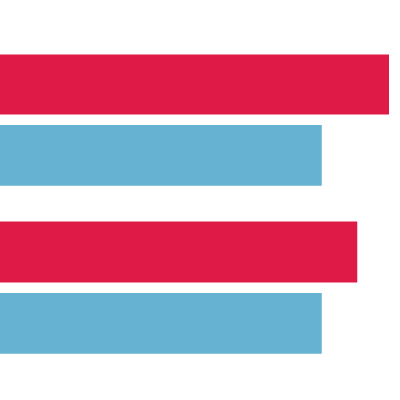
- People from all minority ethnic groups experience greater rates of poverty than white people.
- The poverty rate for people of Pakistani and Bangladeshi ethnicity is more than twice as high (49% and 53% respectively) than the rate for white people (19%).
- Disabled people are six percentage points more likely to be in poverty than non-disabled people (26% compared with 20%).
- 43% of single-parent households live in poverty, compared with 13% of couples without children and 23% of couples with children.
Poverty can affect someone’s health when financial resources are insufficient to meet their basic living needs, such as adequate heating for the home, appropriate clothing or adequate nutrition.
This chart shows the proportion of people living in poverty in the UK in 2021/22 and is broken down by different characteristics: household composition, disability and ethnicity. As housing costs have a big effect on the proportion of people that find themselves in poverty, the numbers presented below are for poverty after taking into account housing costs.
- Poverty rates vary for different family types. The highest and lowest poverty rates are 43% for single parents and 13% for couples without children.
- The poverty rate for disabled people is 26%, compared with 20% for non-disabled people.
- The poverty rate is higher for every minority ethnic group than for people of white ethnicity (19%), but levels vary significantly:
- The poverty rate for people of Indian ethnicity is 23%.
- The poverty rate for people of Pakistani (49%) and Bangladeshi (53%) ethnicity is more than twice as high as the rate for people of white ethnicity.
- The poverty rate for people of black ethnicity is 40%.
Differences by household composition reflect two key dynamics. The first is that households with children tend to have higher poverty rates because there are more people in the household relative to its potential income. The second is that housing costs for a couple can be similar to those of single people, but their income can be double.
The poverty rate for disabled people as a whole likely masks significant variation in poverty, partly related to the type of disability someone has. In addition, the standard measure of poverty potentially understates the extent of poverty for many disabled people because their income can be overstated. This is because the income measure includes income from benefits designed to cover the additional costs of disability, such as special equipment or higher heating bills, without the costs of such support being accounted for.
Differences by ethnicity largely reflect differences in employment, earnings and housing tenure. For example, the employment rate for people of Pakistani and Bangladeshi origin is around 17 percentage points lower than the average, hourly pay is lower and fewer people in these groups own their homes, so have higher housing costs. The poverty rate for most minority ethnic groups increases markedly when accounting for housing costs. Worse outcomes – in employment, earnings and housing – reflect a variety of factors, including discrimination in employment and services. For migrants, the nature of migration can be an additional detrimental factor: for example, whether migration was through channels that make employment harder, such as asylum, and how recently they arrived in the UK.
- Poverty is defined as an individual living in a household with a net household income below 60% of that year’s median.
- Income is equivalised, which means it is adjusted for household size to reflect economies of scale: for example, a household of four needs more income for the same standard of living as a household of one, but not four times as much.
- Disability is defined as reporting any physical or mental health condition(s) or illness(es) that lasts or is expected to last 12 months or more, and that limits someone’s ability to carry out day-to-day activities either a little or a lot.
- Data for 2020/21 is not included in line with the Department for Work and Pensions’ guidance related to data quality during the COVID-19 pandemic.
- Figures for 2021/22 data have been affected by the pandemic and are subject to additional uncertainty. They should be viewed with caution and in line with broader trends.
Source: Health Foundation analysis of Department for Work and Pensions, Households below average income, UK, 2021/22







